Howard Messing is president and CEO of Meditech.

How’s business?
I think we’re doing very well. The stimulus bill has certainly stimulated.
I noticed on the financials that operating income dropped last year for the first time. Was that just an accounting irregularity, or what happened there?
Operating income dropped last year… Well, we had a drop in sales last year because of the first half of last year. Nobody was buying anything because everybody was figuring out what was going on. That’s probably why you see a small drop in there.
I take it that’s totally reversed and then some.
Right, the problem being that between the time we make a sale and the time the income shows up is the better part of a year. Even though we were making a lot of sales, the second half of last year wasn’t reflected until this year.
Tell me about the challenges and the successes with 6.0. That’s a pretty big step for the company.
6.0 is, yes, a very big step for us. We’ve rewritten a bunch of our software from scratch, which we tend to do every certain number of years, certainly every 7-10 years, as we get new ideas and better ideas. It’s gone pretty well. It’s gotten a great reaction from people.
The biggest challenge for us is that we have so many customers running our older version of software that we have to not only maintain the older version, but actually continue to development in it. We’ll have to continue that for some number of years to come until the vast bulk of our customers upgrade to our newer software.
In addition, we still have the rest of our apps. We’ve only done a core set of applications so far. We’re going to have to do the rest of those over the next 2-3 years.
I take it those would co-exist? If someone wanted 6.0, they could still run everything, it’s just they would be 6.0 on some things?
Right. That’s the way we do it.
I would assume there’s quite a number out there running Magic?
Yes, there’s quite a lot.
Do you have a feel for how many that is?
Something over 1,000-1,200 sites, I believe, are still running Magic.
And your total count — I don’t know what it is now. It used to be around 2,100.
2,100 or 2,200.
So half are still on Magic. Is that the next logical step, that they would go all the way from Magic to 6.0?
Yes, we do have a plan where people go straight from Magic to 6.0. There’s no reason to go to the intermediate.
There were some good things said by the folks at the HIMSS conference — by Dave Garets, if I remember right — about the CPOE adoption with 6.0, which seems to be dramatically improved. Was that part of the reason for rewriting it in a way that was more Windows familiar?
Yes. I think the big difference there is functionally. The old stuff and the new stuff currently is pretty much the same, but the look and feel is certainly different.
People, particularly doctors and nurses, are much more desirous of a modern look and feel and they’re willing to accept things a lot easier if it’s a modern look and feel. I think, yes, that’s why you’re seeing a much greater acceptance. I don’t know about much greater, but a greater acceptance, certainly, with 6.0.
At the same time, the new interface also has allowed us, I think, to reduce things like number of clicks and all those good things. That’s also helped.
Some of the attention that’s out there now is going to companies like Eclipsys and Cerner for opening up their system to third-party customization or hooks into the application. Meditech’s always been pretty close to the vest on not letting clients screw around with the underlying stuff. Is that something that’s in the works or do you even believe in that concept?
I’m not really even sure what the competitors are doing in that area. We’ve always had some ability for our customers to define some things on their own, but overall I would say no, we don’t believe in customization as a desirous thing. It certainly is a necessary thing, on occasion, to do.
I think, moving forward with certification and the patient safety and all that, it’s probably going to be a less attractive feature for people to use than it is in the present time. We don’t have any great plans on that.
What do you think about the whole certification argument? Do you like the way it’s changing? What are your thoughts, as a vendor, on what certification means to you?
What certification means to me? I guess in many ways, I would have been the last one to say that certification was a good thing, but I have surprised myself by coming around quite a bit in thinking that it, perhaps, is a good thing for our industry. Certainly, we’ll quibble over the details of how it’s done, and quibble about the particular way of the government’s getting involved.
I’d like to say I’m a short-term pessimist and a long-term optimist, but in the long run since I worry a lot about patient safety, I think certification may very well be in everybody’s best interest. I would rather that it was cast in terms of results rather than specific ways to get there, but over time, I assume that we will get modification into the way it’s written and be able to do it in a meaningful way — not to use the word too much. We’ll see …we’ll see.
In the short-term, yes, it’s a pain in the ass because you’ve got to get it certified. We don’t know all the rules and we may have to get it certified multiple times, but so long as it’s a level playing field for everyone, and so long as the eventual outcome is to have better systems and interoperable systems, I don’t think it’s necessarily a bad thing.
How do you think the whole CCHIT will change now that Meaningful Use is off on a different direction? What do you think certification’s going to look like in a year or two?
I really don’t know. We’re certainly will have some people who continue to look at it and put their ideas in and we’ll see how it goes.
Do you think, under the CCHIT requirements, that you had to invest R&D to do stuff that customers probably didn’t really care about that was still on the checklist?
A very small amount of that, but most of what’s on there is stuff that people do care about. I’d actually have to think long and hard about something that nobody cared about.
Meditech’s one of the few systems out there that’s really appropriate for those many small hospitals that maybe aren’t very far along on their IT journey. Are you doing anything new to go after that business?
Not really. First of all, we think we’re suitable for all hospitals regardless of size, but I will agree that the small hospitals find our cost of ownership to be particularly good for them, and tend to work with us. No, we’re not doing anything specific to do that, other than we continue to watch our pricing to make sure that we remain appropriate for various sizes of hospitals.
What competitors do you face across the table most often?
I think McKesson is certainly in the medium-sized hospitals as the competitor, and I think we face them most often. In the small hospitals, probably CPSI. In the large hospitals, it’s mostly Cerner. Occasionally in the largest hospitals, Epic.
I’m assuming you displace some in-house vendors occasionally. Who are the ones that usually get displaced in favor of Meditech?
It’s a mixture of all of them.
Yes?
Yes. I’m not going to single out any particular vendor.
Have the demographics of your customer base shifted as far as size, location, or type of hospital?
Yes, I think the size is slightly larger than it used to be. If you would have asked me five years ago, I would have said our sweet spot was 200-225 beds. I would say it’s closer to 275-300 beds today.
If you took that as a percentile, that’s probably a fairly huge chunk of the hospitals that are out there. I’m sure you probably know that number by heart, but that’s, I would guess, most of them by far.
Well, we think we’re in about 25-28% of the hospitals in the country, if that’s what you’re asking me.
I was just saying, if somebody drew a line and said, “Well, your sweet spot’s 300 beds,” or whatever it is, you would still not be ruling out very many potential prospects.
That’s true, that’s right. We don’t want to rule anybody out.
What about hosting? What’s the latest buzz on people wanting hosted solutions or turnkey solutions?
Actually, that’s kind of interesting because I used to not be at all a fan of hosting. I didn’t think that made economic sense for Meditech customers again because I thought our cost of ownership was pretty low.
Having said that, I’ve seen more interest over the last year or two than I expected, and not necessarily from the places that are most cost-pressed, which is what you would expect. I think a lot of people are taking the attitude that even if they don’t save money, it reduces management time and frees them up to deal with more long-term issues.
We’re seeing more of it. We ourselves have no intentions of providing that service directly, but there are various people out there who are interested in providing that service with Meditech software and we continue to say that’s fine with us.
When I talked to you years ago, it was the ‘stick to the knitting’ philosophy; that you didn’t want to be in something that was distracting. Is that the reason that you don’t want …
Absolutely. We sell software and the services around that software. We don’t do anything else.
The proposed acquisition of Eclipsys by Allscripts moved the idea of integration between hospitals and physician practices to the forefront. What do you think about the acquisition and that trend of people suddenly short-listing only those vendors who have strong integration with outpatient?
I don’t pay too much attention to what the competitors are doing, so I don’t know that I have any particular impression on Eclipsys and Allscripts. But in general, I agree with the philosophy and something we’ve promoted – that there has to be tighter integration with all avenues of care, both ambulatory and acute care and eventually, nursing homes and independent care and whatever.
Obviously the biggest connection is between ambulatory and acute care, and one way or another, there needs to be a seamless integration with that, both in terms of getting the doctors to appreciate better what’s going on and in terms of taking better care of the patient. So I think you’ll see, whether it’s by acquisition or strong partnerships between companies, a tighter and tighter integration between all horizontal attributes of care. We’ve done that for a long time ourselves with our partner LSS, but even with us, I think you’ll see a tightening of that integration.
At the same time, still recognizing that for a long time to come, there are going to be doctors out there who have their own systems that are not necessarily the one that the inpatient or the acute care facility might choose for them.
Are you finding that that question comes up more often when you have prospects; and are they comfortable with the answer that you can give them on your strategy for either one system for doctors, or foreign systems that you can integrate?
It does come up more often. I’m very happy with that answer. It seems to be something that most people respond well to.
What do you think about the trend of smaller hospitals that are struggling with everything from technology to financing being acquired? How do you think that will change your business?
I don’t think it will change the business that much. There may be less customers, but they will be bigger customers overall if that trend continues.
I think we’re actually a few years away from the real cost pressures hitting our hospitals. Many of my hospitals would disagree with me on that. They’d say they’re under that pressure today, but as the baby boomers age in the next four or five years, there’ll be a lot of cost pressure and there’ll probably be a lot of consolidation in the hospital industry at that time.
When we have customers of ours that are acquired by another hospital, often our system is the one that stays in place. Often they do a search to decide what they want to do and it’s just another competitive situation. I don’t think it changes the business that much.
It might hurt a vendor that specializes only in the smallest hospitals if they tend to disappear, but I actually don’t think the smallest hospitals will all disappear. There’s a need for those small hospitals out in rural areas, and many of them are fiercely independent.
It seems like nobody even blinks an eye these days when you see a deal signed for $30 or $50 or even $100 million. Does your phone ring more often when hospitals that can’t afford that suddenly think the Meditech picture looks attractive?
Well, I blink at somebody spending $100 million. I don’t really understand some of the economics behind these decisions that are being made at a time when the hospitals are claiming they’re under so much cost pressure. Then you see them making these gigantic deals for huge amounts of money for a system that I consider to be basically equivalent to what I offer for 20% of the cost. It’s very, very strange, and I think that will catch up with people in the long run.
So, I’m not sure how to answer your question, but we continue to say that we’re good value. We’re not looking to take advantage of anyone by raising our prices tremendously. We think that, in the long run and with the cost pressures now, people will more and more realize that we were a good alternative.
Assuming that it would be difficult to look at the marginal benefit compared to the marginal cost of $10 million versus $100 million, why do you think people are making those decisions?
I think there’s some element of people thinking if you’re spending that much, you must be getting a better system. I think there’s some element of … how do I want to put it? There’s some element of people wanting to … I have to be careful how I say this.
Many hospital managements are afraid of losing their doctors, and so they turn the decision over to their doctors. The doctors are not necessarily concerned with the overall finances of the acute care institution, so the cost does not become a factor in the choice. I think we see a lot of that happening. I don’t think there’s any way it can be cost justified.
As I understand it, the HITECH reimbursement isn’t based on what you spend, it’s based on volume. Bottom line, it would stand to reason that the less you spend, the more you get to keep of the difference. Are people asking you to run those numbers?
They do ask us to run those numbers. That’s the way I understand it. Like I said, I think it will come back to haunt some people who are spending gobs and gobs of money on some of these systems.
And it’s not, of course, just the capital upfront. The maintenance is going to be just excruciating on some of that.
Right, right. Total cost of ownership is huge on some of these systems.
Are you pricing 6.0 differently, or is that basically just a replacement at the same price?
It’s a replacement. We don’t charge different amounts for different systems. It’s too complicated.
Your maintenance fees are, I assume, still low?
Our maintenance fees are basically the same as they’ve always been. We charge basically, 1% a month of what people buy for maintenance and we intend to keep that. Not that there aren’t modest raises over time, but we try to keep it low. We don’t think that our systems are difficult to maintain.
With other vendors, not only do the price goes up, but so do the maintenance percentage. It seems like it shames the other vendors who get 18 or 20% on five times the cost.
They don’t seem to be shamed by it. If they were truly shamed by it, they would do something about it.
Or the customers would stop buying.
Right, right.
How do you educate someone who somehow sees that as an equivalent alternative? Are they just not price sensitive?
To be honest, we don’t actually lose many sales to the real expensive systems that are out there. Many of our customers do toy with it. Many of them do understand it’s too expensive and then back off on it.
We just do what we’ve always done, which is we want people to want our system. We don’t want them to buy from us because they don’t want somebody else’s system, so we continue to demonstrate what we do.
If they bring up specific features that they think they’re getting with somebody else’s system that we don’t have, we try to point out to them that it’s actually there in our software. Hopefully, we make our case and it’s a strong one, that it’s better to go with Meditech.
Three or four years from now is when I believe the real crisis will happen in healthcare. Again, I know people say it’s happening now, but I really believe it’ll be three or four years from now. As the baby boomers enter Medicare, hospitals are not going to be able to spend as much on healthcare information systems as they do today. I think Meditech is very well positioned for when that happens, and the companies that are charging a lot will have built cost structures that they won’t be able to maintain.
Do you think there’s a certain snob value that a hospital says, “Oh, I can’t run Meditech. I’ve got to have Epic or Cerner because that’s what all the cool hospitals like mine are running.” Do you think that there are people who never even pick up the phone to call you?
Yes, I believe that exists. I think it’s less than it used to be. I think we’ve made a lot of progress, particularly in the multi-hospital chains. Particularly among the Catholic hospitals we’ve done very well, so I think it’s less than it used to be, but yes, there is certainly the snob appeal or whatever you want to call it — the CIO of the large teaching institution who can’t do Meditech because we’re also in community hospitals.
I would assume your win percentage is a lot higher when the CFO is involved more actively.
I’ve never really looked at that, to tell you the truth. I’d imagine it’s true, but I’ve never actually thought about it.
What’s your overall thought on the proposed Meaningful Use criteria and the whole healthcare reform issue and how it’s going to affect your business?
I wish the Meaningful Use was caged in terms of results than it was caged in terms of features of software. Then, I would think you would have a much better impact on patients than it, perhaps, will caging it the way that they’ve done it. It’s certainly is driving a huge amount of sales for us today in time, as people decide they have to make a decision now.
If they are going to change systems, they won’t be able to afford to change their system 18 months from now when they’re in the thick of trying to get that money from the government. So, it’s driven a huge amount of business today, which I expect to be a blip.
I expect that 18 months to two years from now, there’ll actually be a lull in people buying systems; much as it was after Y2K, wherein 1999 was a huge year and then 2000-2001, business really fell off. I see the same thing here.
I do wish the government had spread this out over a longer timeframe. I think that our customers would be able to be better focused on the real results they can get from it if we had done that rather than chasing after the money and doing the minimum they can to get the money because it’s under such a tight time frame. But again, as I said before, I’m a long-term optimist. I think in the long run this will all be good.
How do you plan for your business knowing that that hump is going to go away after the people have locked in with whoever their partner is?
The main thing we’ve done is limit the implementations that we’re doing currently, which has been a struggle. We have done that in term of we are growing, but we’re not growing so fast that we’ll have people who won’t have what to do 18 months or two years from now.
We’ve really spaced out the implementation. As people coming to us for the first time today are getting dates for delivery that are well over a year, to sometimes, depending on what they’re buying, as much as 18 months from now, which many of them don’t like. But that’s the way we control the business and make sure that our long record of no layoffs and controlled growth remains intact.
How do you think your job will change as CEO?
I don’t think it’ll change very much at all. Neil Pappalardo, who has been our CEO for 40 years or so, has just decided that it’s time for him to give up that title, but in effect, I’ve been running the day-to-day business for quite a while now. He’s still around; he just has been gradually spending more and more time on other pursuits, and so thought it was time to pass the baton. So, I don’t really think it’s going to change much on a day-to-day basis.
Is there a movement to prepare to transfer to the next generation of leadership?
I think we’ve always done that. It’s the case that we have appointed new officers several times over the past three years. I think you’re going to see us doing that again before too long.
We have a great set of people who are what we call directors, the round of people who report to our officers. It’s a lot of good people who have been here a long time who see this as their life’s work, and they will gradually take over. Our succession planning is thought out very carefully. We try very hard to get people promoted before the person who they are going to be, so to say, replacing, is ready to retire.
For example, we had a VP of development, a fellow named Bob Gale, who about 2-3 years ago we promoted him to senior VP and brought in a woman by the name of Michelle O’Connor, and she has been gradually taking over responsibility from him. You’ll see that in all of our areas.
This is one of those boom cycles where suddenly everybody and their brother want to be in healthcare IT. Is the company going to stick to its guns about not selling, not going public, not changing?
As long as I’m around it will. Yes — the answer to that is yes. We have too much fun the way it is. Again, we think the prospects for the future are very, very good. We see no reason to change the structure of the company. It’s worked well for us and we don’t see any benefit.
If you looked out 5-10 years, what are the strengths, weaknesses, opportunities and threats for Meditech?
I think the biggest threat is if the healthcare system changes in such a way that we can’t adapt correctly, and nobody really knows where the healthcare system is going. There are certainly many competing thoughts. That’s one of the reasons that I have been pursuing international business is to give us some stability that doesn’t depend on, let’s say, one healthcare system in the world. I think that’s the biggest, biggest risk we have.
I also think in some ways that that’s our biggest strength, in that we’ve shown flexibility. We reinvented ourselves many times and shown that we can have multiple generations of software running that address the different needs of the healthcare system. Hopefully, whatever does happen, we’ll be able to deal with.
Anything else you wanted to talk about or any concluding thoughts?
You know, there’s one thing you didn’t ask me about that I think is going to become more and more important as IT systems become more and more central to the clinical care process, which is patient safety. That’s something that’s a very big personal concern to me. We’re making every effort we can to produce a safe as possible software as we can. To some extent, I wish that the ARRA requirements actually included some patient safety issues as well in them.
I’m sure that the FDA, if they ever get funding, will start to regulate our software. In Canada, our kind of software becomes a medical device in about a year. We’re going to have to be regulated if we were a medical device which has patient safety implications. I think that’s the biggest issue for the industry that we should all be cognizant of and we should all care a lot about.
The only thing that keeps me up at night is the fear that we’re doing something that’s going to hurt someone. I hope that all the other CEOs have the same kind of feeling, because if one hurts somebody, it casts a light on the entire industry.
Generally when that happens, either it wasn’t designed to be very usable or the QA wasn’t very good. What steps do you take to build that safety into the product?
We certainly have a fairly thorough QA process that we do to make sure that the software is as absolutely safe as it can possibly be. Then we also have a fairly detailed process when a customer reports a possible patient safety issue. That problem is immediately elevated in status. We make a quick determination whether it’s even possible that there’s a patient safety issue so that we can notify all customers of the possible issue. Then we throw a lot of development resources and QA resources on it to figure out what the problem is and fix it.
I agree with you that sometimes patient safety issues are bugs, but sometimes they’re just a misunderstanding of how the software needs to be used; or a question of terminology. Those are actually a lot tougher to find, so you have to be that much more careful in your design, and that much more careful in your quality review of things.










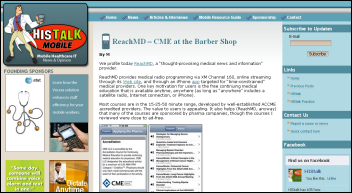










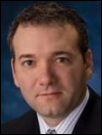

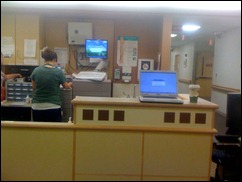

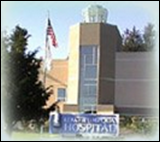







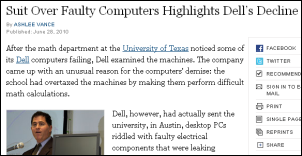

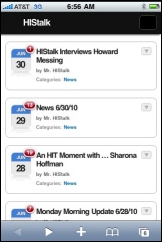
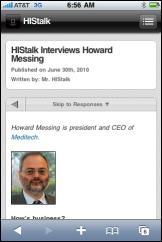






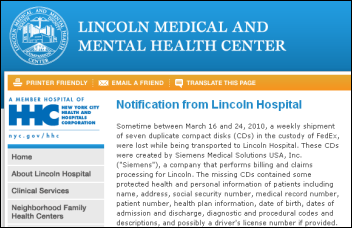










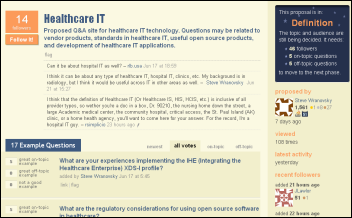

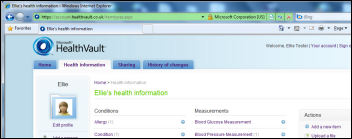


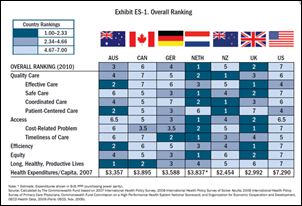









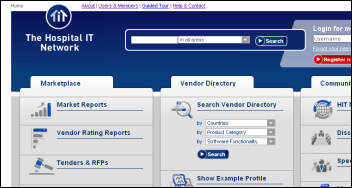






The CEO sentenced to jail for massive healthcare fraud will get pardoned in a week.